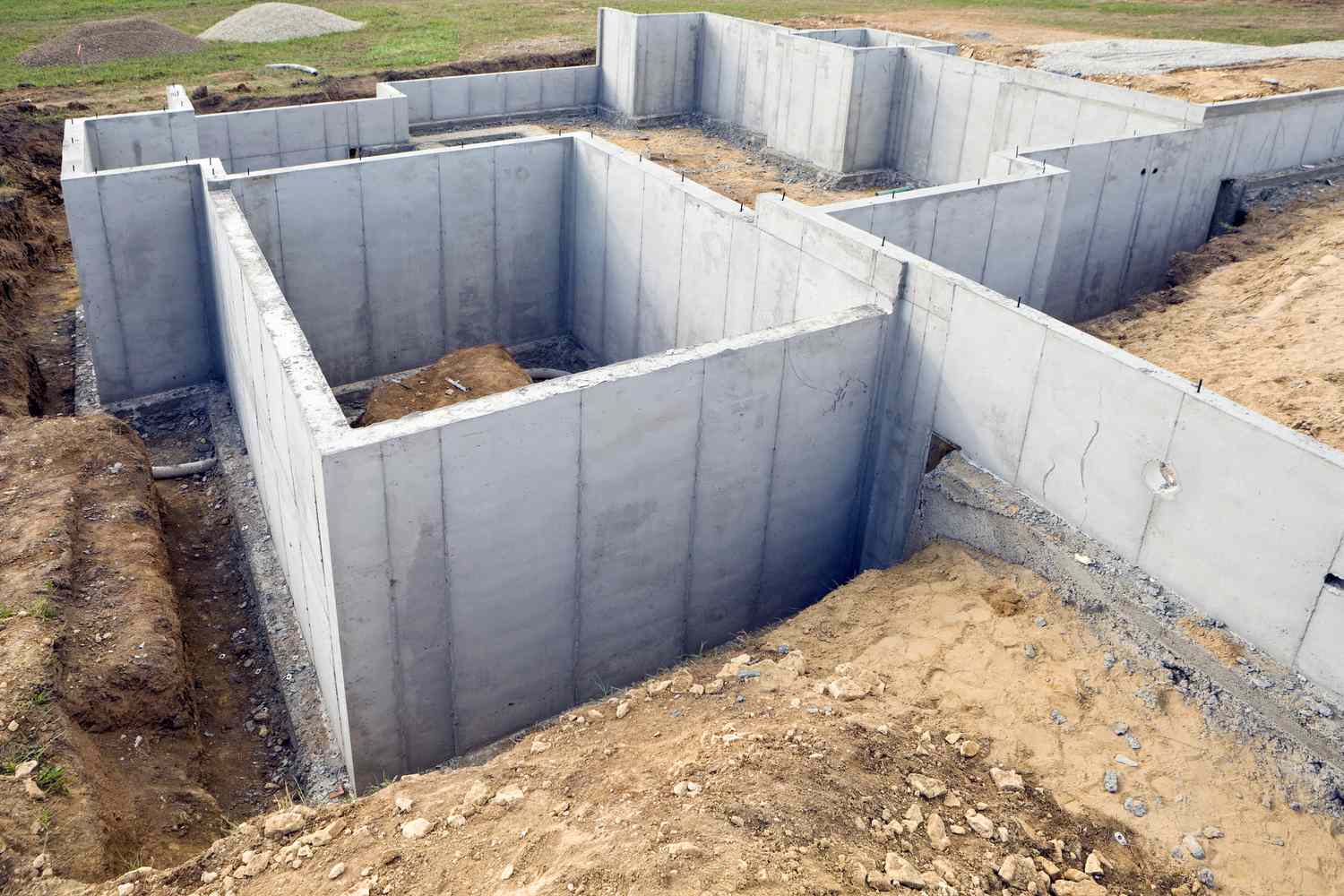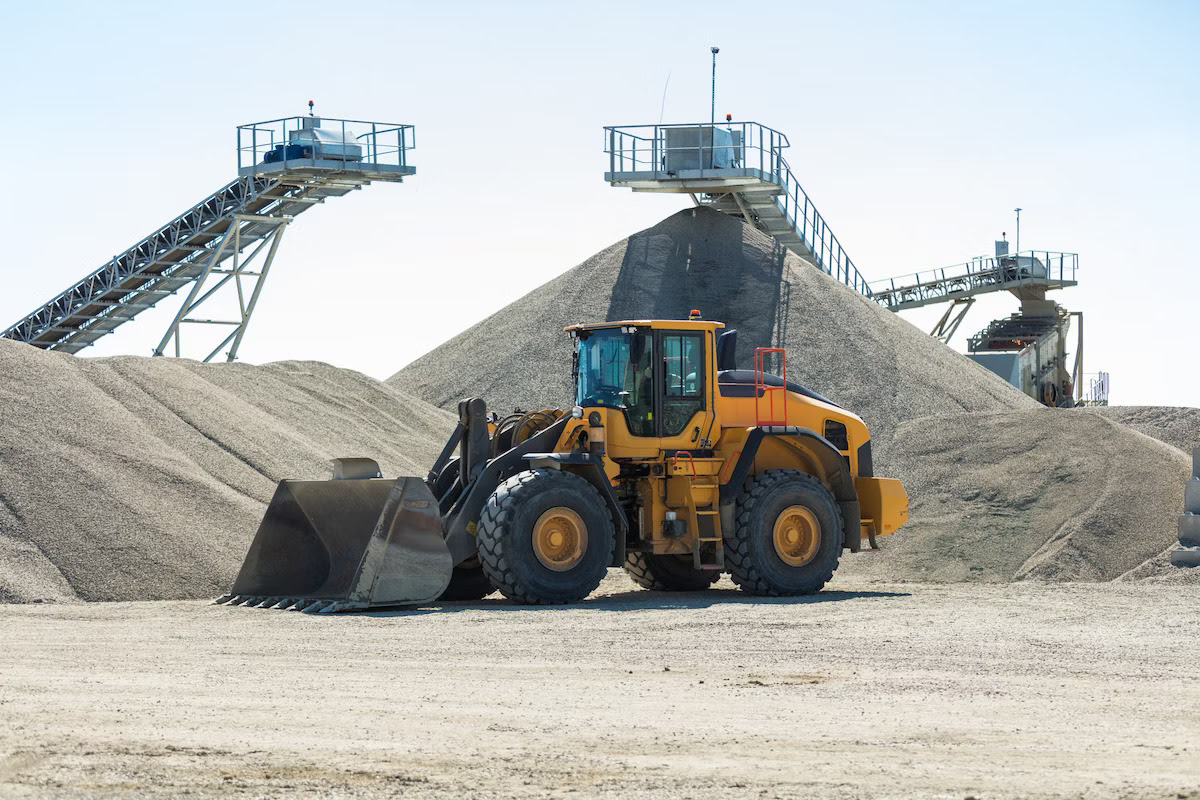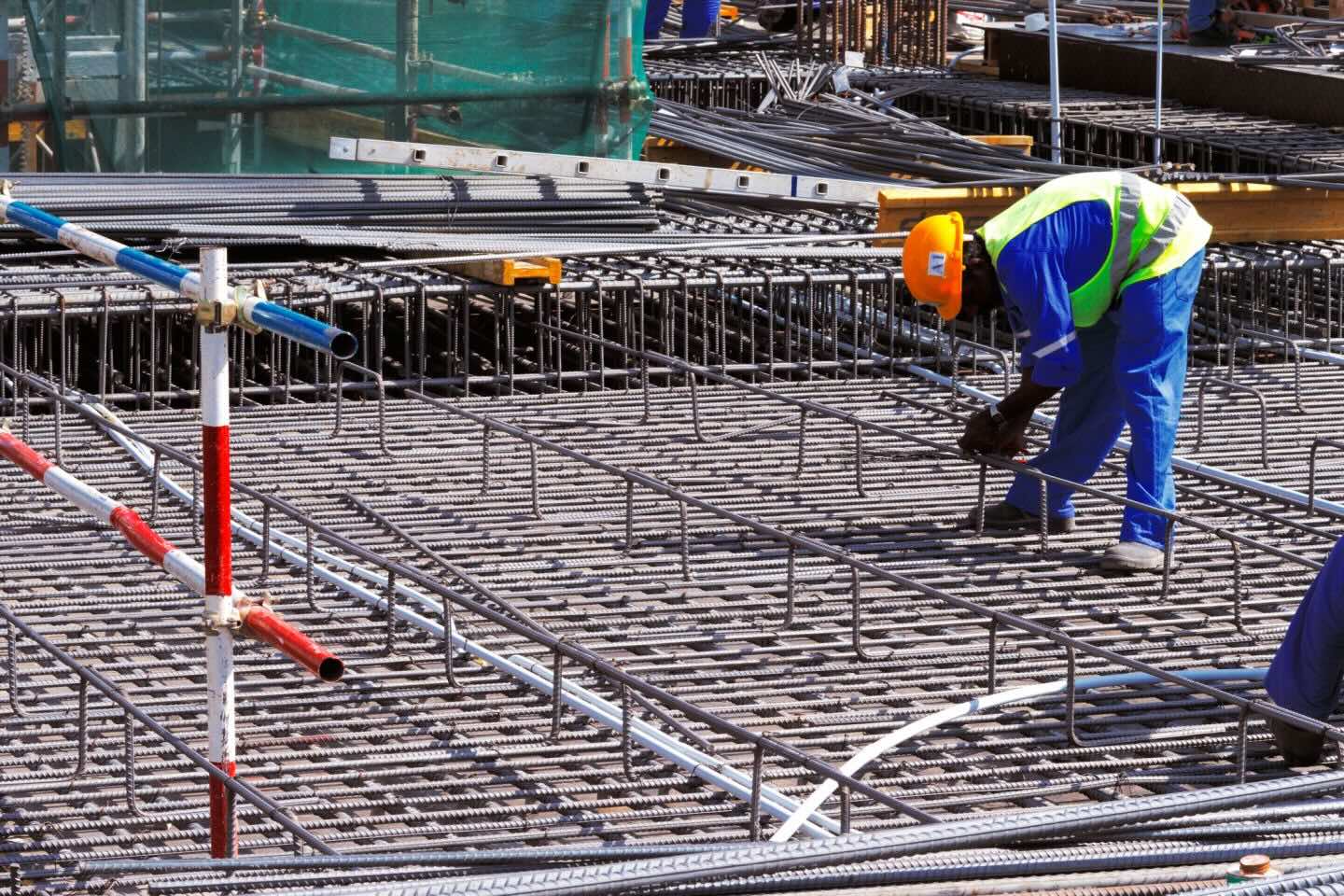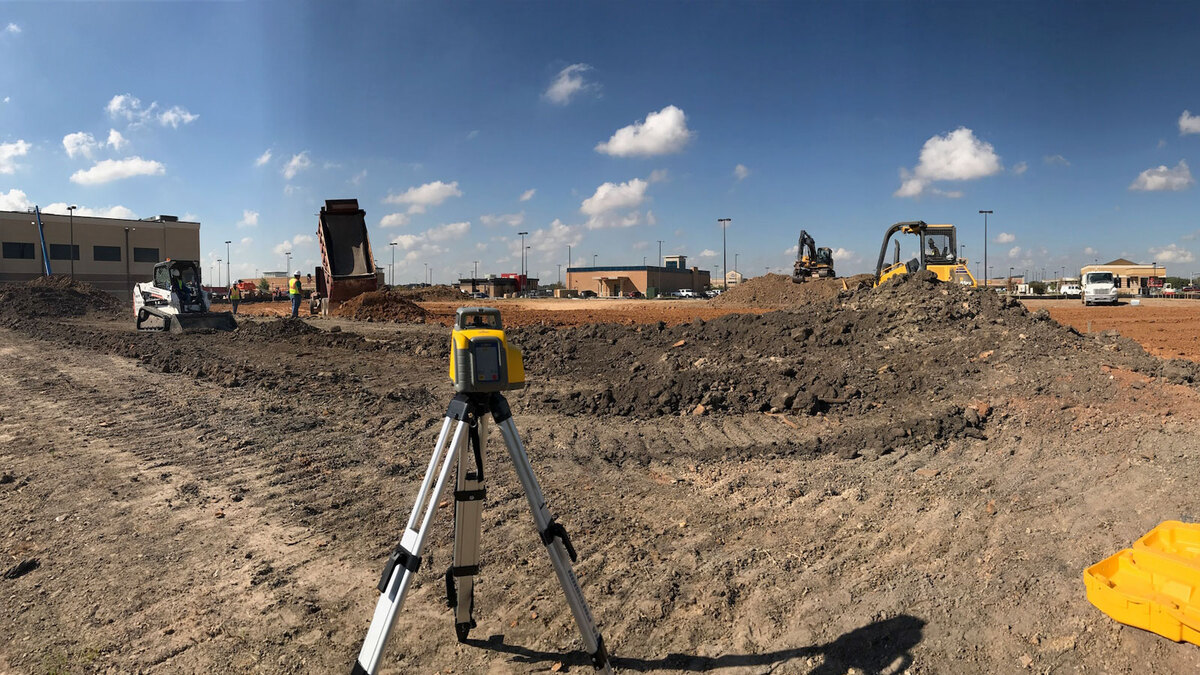Home>diy>Building & Construction>What Is TCO In Construction


Building & Construction
What Is TCO In Construction
Modified: January 20, 2024
Learn the concept of Total Cost of Ownership (TCO) in the construction industry. Understand how it affects building construction projects and make informed decisions.
(Many of the links in this article redirect to a specific reviewed product. Your purchase of these products through affiliate links helps to generate commission for Storables.com, at no extra cost. Learn more)
Introduction
In the world of construction, achieving cost-efficiency and maximizing return on investment are essential goals. One of the measures that can help achieve these goals is Total Cost of Ownership (TCO). TCO is a comprehensive analysis that takes into account all costs associated with a construction project over its entire lifecycle, from inception to completion.
TCO goes beyond just the initial purchase or construction cost and encompasses a broader perspective by considering factors such as maintenance, operation, energy consumption, and disposal or decommissioning costs. It provides a more accurate picture of the true cost of a construction project, allowing builders and developers to make informed decisions and optimize resource allocation.
In this article, we will explore the concept of TCO in construction, its components, importance, challenges, and strategies for reducing TCO. We will also examine real-life case studies where TCO analysis has been successfully implemented.
Key Takeaways:
- TCO analysis in construction provides a holistic view of project costs, empowering stakeholders to make informed decisions, optimize resource allocation, and achieve long-term cost savings and sustainability.
- Real-life case studies demonstrate the successful implementation of TCO analysis, showcasing how it leads to cost savings, improved sustainability, and enhanced building performance in construction projects.
Read more: What Is Construction
Definition of TCO in Construction
Total Cost of Ownership (TCO) in construction refers to the comprehensive evaluation and assessment of all costs associated with a construction project throughout its entire lifespan. It takes into account not only the initial purchase or construction cost but also the ongoing expenses incurred for maintenance, operation, and eventual decommissioning.
TCO provides a more accurate estimation of the financial impact of a construction project by considering both direct and indirect costs. Direct costs include materials, labor, equipment, and initial construction expenses. Indirect costs include maintenance, repairs, utilities, insurance, taxes, financing, and disposal costs.
TCO analysis takes a holistic approach to understanding the financial implications of a construction project. It allows stakeholders to evaluate the project’s long-term viability, uncover hidden costs, and identify opportunities for cost optimization throughout the project’s lifecycle.
By analyzing the TCO, construction professionals can make informed decisions about the most cost-effective materials, equipment, and construction methods. They can also identify areas where investments in energy-efficient systems or technologies can result in long-term cost savings.
TCO analysis is commonly used in construction projects such as building new structures, renovating existing buildings, or deploying infrastructure systems. It enables project managers, contractors, and clients to evaluate different options, compare the financial impact of each, and choose the most financially advantageous solution.
Overall, TCO in construction provides a holistic view of the financial implications of a project, helping stakeholders make informed decisions and optimize costs throughout the project’s lifecycle.
Components of TCO
The Total Cost of Ownership (TCO) in construction consists of various components that contribute to the overall financial impact of a project. Understanding these components is crucial for accurate TCO analysis and making informed decisions. Here are the key components:
- Direct Costs: Direct costs encompass the expenses that are directly associated with the construction project itself. This includes materials, labor, equipment, permits, and any other costs directly related to the construction process.
- Indirect Costs: Indirect costs refer to the expenses that are not directly tied to the construction process but are necessary for the project’s functioning. This includes costs such as maintenance, repairs, utilities, insurance, taxes, financing, and legal fees. These costs accrue over the lifespan of the project and can significantly impact the overall TCO.
- Operational Costs: Operational costs are ongoing expenses incurred for the day-to-day operation of the constructed facility. This includes costs such as energy consumption, water usage, heating, cooling, cleaning, and general maintenance.
- Maintenance Costs: Maintenance costs encompass the expenses associated with keeping the constructed facility in good working condition. This includes routine maintenance, equipment repairs, replacement of parts, and any necessary upgrades or renovations over time.
- Disposal or Decommissioning Costs: Disposal or decommissioning costs are the expenses incurred when the facility reaches the end of its useful life and needs to be dismantled or removed. This includes costs such as demolition, waste removal, and environmental remediation.
- Life Cycle Assessment: Life Cycle Assessment (LCA) is an essential component of TCO analysis. It involves evaluating the environmental impact of the construction project throughout its entire lifespan, from raw material extraction to disposal. LCA helps identify opportunities for reducing environmental impact and aligning TCO with sustainable development goals.
By considering these components, TCO analysis provides a comprehensive overview of all the costs associated with a construction project. It enables stakeholders to make informed decisions, optimize resource allocation, and identify opportunities for cost savings and efficiency improvement.
Importance of TCO in Construction Projects
Total Cost of Ownership (TCO) analysis plays a crucial role in construction projects by providing a comprehensive understanding of the financial implications over the project’s entire lifespan. Here are several reasons why TCO is important in construction:
- Accurate Cost Estimation: TCO analysis enables stakeholders to have a more accurate estimation of the total costs associated with a construction project. By considering all direct and indirect expenses, including operational costs, maintenance costs, and eventual disposal costs, TCO provides a realistic and holistic view of the financial impact.
- Informed Decision-Making: TCO analysis empowers stakeholders to make informed decisions during the planning and design stages of a construction project. By evaluating different options and comparing their TCO, project managers, contractors, and clients can choose the most cost-effective solutions that align with their objectives.
- Optimized Resource Allocation: TCO analysis helps optimize resource allocation throughout a project’s lifecycle. By understanding the long-term costs associated with different materials, equipment, and construction methods, stakeholders can allocate resources in a way that maximizes efficiency and minimizes waste.
- Identification of Hidden Costs: TCO analysis uncovers hidden costs that may not be immediately apparent. It goes beyond the initial construction cost and considers ongoing expenses such as maintenance, repairs, and utilities. By identifying these hidden costs upfront, stakeholders can incorporate them into their financial planning and avoid unexpected financial burdens in the future.
- Sustainable Decision-Making: TCO analysis helps align construction projects with sustainability goals. By considering long-term operational costs, energy efficiency, and environmental impact through life cycle assessment, stakeholders can make sustainable choices that reduce the project’s carbon footprint and promote responsible resource management.
- Long-Term Cost Savings: By considering TCO analysis, stakeholders can identify opportunities for cost savings over the project’s lifespan. This can include investing in energy-efficient systems, choosing durable materials that require less maintenance, or implementing preventive maintenance strategies to avoid costly repairs in the future.
Overall, TCO analysis brings transparency and financial clarity to construction projects. It enables stakeholders to make well-informed decisions, optimize resource allocation, and align projects with sustainability objectives. By considering TCO, construction projects can achieve cost-efficiency, maximize return on investment, and contribute to a more sustainable built environment.
Factors Affecting TCO
Several factors can significantly impact the Total Cost of Ownership (TCO) in construction projects. Understanding these factors is essential for accurate TCO analysis and effective cost management. Here are the key factors that influence TCO:
- Design and Construction Quality: The design and construction quality of a project can greatly influence its TCO. A well-designed and well-constructed facility is likely to have lower maintenance and operational costs over time. Attention to detail during the design phase can also result in energy-efficient systems and reduced long-term utility expenses.
- Material Selection: The selection of materials used in construction can have a significant impact on TCO. High-quality, durable materials may have a higher upfront cost but can result in lower maintenance and replacement costs over the lifespan of the project. Materials that require frequent repairs or have a shorter lifespan may lead to increased TCO due to additional maintenance or replacement expenses.
- Building Systems and Equipment: The selection and installation of building systems and equipment play a crucial role in TCO. Energy-efficient systems, such as HVAC, lighting, and plumbing, can reduce operational costs. Choosing reliable and long-lasting equipment can minimize maintenance and replacement expenses.
- Operational and Maintenance Practices: The operational and maintenance practices adopted for a construction project can impact its TCO. Regular maintenance and timely repairs can prevent costly breakdowns and extend the lifespan of equipment and building components. Implementing preventive maintenance plans and training staff in proper operation and maintenance can help reduce long-term costs.
- Energy Efficiency: Energy consumption is a significant cost factor in construction projects. Implementing energy-efficient measures, such as insulation, efficient lighting, and renewable energy systems, can reduce utility expenses over time. Evaluating and incorporating energy-efficient solutions during the design and construction phases can result in considerable cost savings during the project’s lifespan.
- Location and Environmental Factors: The location and environmental factors of a construction project can impact TCO. For instance, a project located in an area prone to natural disasters may require additional measures for resilience and increased insurance costs. Environmental factors, such as climate or soil conditions, can also influence ongoing maintenance and repair expenses.
- Regulatory Compliance: Compliance with building codes, regulations, and environmental standards can affect TCO. Ensuring that the project meets all legal requirements can prevent costly fines, penalties, and remediation expenses. Compliance with energy efficiency standards and sustainable building certifications may also result in long-term cost savings.
Considering these factors during TCO analysis helps stakeholders identify potential cost drivers and make informed decisions to optimize project costs. By addressing these factors, construction projects can minimize TCO, maximize return on investment, and ensure long-term financial sustainability.
When calculating the total cost of ownership (TCO) in construction, be sure to consider not only the initial purchase or construction costs, but also ongoing maintenance, operation, and disposal costs over the entire lifespan of the asset.
Read more: What Is Residential Construction
Benefits of Considering TCO in Construction
Considering the Total Cost of Ownership (TCO) in construction projects offers numerous benefits for stakeholders involved. It provides valuable insights into the long-term financial implications of a project and helps guide decision-making. Here are the key benefits of considering TCO:
- Accurate Financial Planning: TCO analysis enables stakeholders to have a comprehensive understanding of the project’s total costs over its lifecycle. This allows for accurate financial planning and ensures that budget estimates are realistic and inclusive of all direct and indirect expenses.
- Informed Decision-Making: TCO analysis provides essential information to make informed decisions during the planning, design, and construction phases. By evaluating the long-term costs associated with different options, stakeholders can select the most cost-effective materials, systems, and technologies, ultimately optimizing the project’s financial performance.
- Optimized Resource Allocation: By considering TCO, stakeholders can identify opportunities to optimize resource allocation. By understanding the lifecycle costs associated with different choices, they can make more efficient use of building materials, equipment, and labor, reducing waste and increasing productivity.
- Improved Project Viability Assessment: TCO analysis helps assess the viability of a construction project by accounting for all potential costs over its lifespan. It allows stakeholders to evaluate whether the projected returns align with the initial investment and to identify any risks or challenges that may affect the project’s financial feasibility.
- Long-Term Cost Savings: TCO analysis helps identify areas where cost savings can be achieved over the project’s lifespan. By considering factors such as energy efficiency, maintenance practices, and material durability, stakeholders can make choices that reduce operational expenses, increase asset longevity, and minimize the need for costly repairs or replacements.
- Promotion of Sustainability: TCO analysis encourages the integration of sustainability into construction projects. By considering factors such as energy efficiency, environmental impact, and life cycle assessment, stakeholders can make choices that align with sustainability goals, reduce the project’s carbon footprint, and contribute to a more sustainable built environment.
- Enhanced Building Performance: By considering TCO, stakeholders can prioritize building performance and occupant satisfaction. Investments in energy-efficient systems, reliable infrastructure, and quality materials can lead to improved comfort, reduced operating costs, and increased value for building occupants.
- Transparent Financial Reporting: TCO analysis provides transparency and accountability in financial reporting. By considering all costs associated with a construction project, stakeholders can ensure accurate financial reporting and avoid hidden expenses that may impact the project’s profitability.
By considering TCO in construction, stakeholders can make informed decisions, optimize resource allocation, and achieve cost-efficiency. It also promotes sustainability, enhances building performance, and ensures transparent financial reporting, ultimately leading to successful and financially viable construction projects.
Challenges in Calculating TCO
While Total Cost of Ownership (TCO) analysis in construction projects can provide valuable insights, it also comes with several challenges that need to be addressed for accurate and effective calculations. Here are some of the key challenges in calculating TCO:
- Data Availability and Reliability: Gathering accurate and comprehensive data for all cost components of TCO can be challenging. It requires access to reliable information from multiple sources, including suppliers, contractors, maintenance records, and financial reports. Incomplete or inaccurate data can lead to incorrect TCO calculations and potentially impact decision-making.
- Long-Term Cost Estimation: Predicting future costs over the lifespan of a construction project can be challenging due to market volatility, inflation, and unforeseen events. It requires making assumptions about factors such as energy prices, maintenance requirements, and technological advancements. These assumptions may introduce uncertainties and affect the accuracy of TCO calculations.
- Complexity of Cost Factors: TCO analysis involves considering multiple cost factors, including direct costs, indirect costs, maintenance costs, and operational costs. These costs can have different timelines, dependencies, and calculation methods, making the overall analysis complex and requiring careful consideration of each factor and its interrelationships.
- Varying Project Lifespans: Construction projects have different lifespans, ranging from a few years for temporary structures to several decades for permanent buildings. Calculating TCO for projects with varying lifespans requires adjusting the analysis to reflect the appropriate time horizon. For long-term projects, the accuracy of future cost estimations becomes even more critical.
- Different Stakeholder Perspectives: Different stakeholders may have varying priorities and perspectives when calculating TCO. For example, the project owner may focus on minimizing upfront costs, while the facility manager focuses on long-term maintenance and operational costs. Balancing these differing perspectives and aligning them with project objectives can be challenging during the TCO analysis.
- Data Interpretation: Interpreting the data and identifying the most relevant cost drivers is essential for accurate TCO calculations. This requires a deep understanding of the construction industry, materials, equipment, and the operational aspects of the project. Misinterpretation can lead to flawed calculations and potentially wrong decision-making.
- Changing Market Conditions: TCO calculations are influenced by market conditions, such as fluctuations in prices for materials, labor, and energy. These market dynamics can change over time, affecting the accuracy of TCO estimations. Regular updates and monitoring of market conditions are necessary to ensure relevant and up-to-date TCO calculations.
Despite these challenges, addressing them with diligence and using the best available data and methodologies can lead to more accurate TCO calculations. It is important to identify potential uncertainties, collaborate with relevant stakeholders, and continuously review and update TCO analyses to ensure their reliability and usefulness in decision-making.
Strategies for Reducing TCO in ConstructionReducing the Total Cost of Ownership (TCO) in construction projects is a vital goal for maximizing return on investment and achieving long-term financial sustainability. Here are several strategies that can help minimize TCO:
- Design Optimization: Start by optimizing the design of the project to ensure it meets the desired functionality and performance requirements while minimizing costs. Consider energy-efficient design principles, space optimization, and material selection that balances durability, cost-effectiveness, and sustainability.
- Energy Efficiency: Implement energy-efficient systems to reduce ongoing operational costs. This includes using energy-saving lighting, HVAC systems, and appliances. Incorporate renewable energy technologies, such as solar panels, to reduce reliance on grid power and lower utility expenses over time.
- Life Cycle Cost Analysis: Perform a thorough Life Cycle Cost Analysis (LCCA) to assess the long-term financial implications of design and material choices. This analysis considers the upfront costs, maintenance costs, and operational expenses throughout the project’s life cycle, helping identify cost optimization opportunities.
- Maintenance Planning: Develop a comprehensive maintenance plan that includes regular inspections, preventive maintenance, and prompt repairs. Proactive maintenance can extend the lifespan of building components, reduce the risk of costly breakdowns, and minimize the need for major repairs or replacements.
- Supplier and Contractor Evaluation: Carefully evaluate and select suppliers and contractors based on their expertise, track record, and ability to deliver within budget and on time. Collaborate with suppliers and contractors to explore cost-saving opportunities, negotiate favorable terms, and leverage their knowledge to identify more cost-effective solutions.
- Value Engineering: Engage in value engineering exercises to identify cost-saving alternatives without compromising functionality or quality. This involves evaluating different design approaches, materials, and construction methods to find the most cost-effective solutions.
- Sustainable Material Choices: Opt for sustainable materials that are durable, require minimal maintenance, and have a lower environmental impact. Consider using recycled or locally sourced materials that can reduce transportation costs and support sustainable building practices.
- Long-Term Cost Analysis: Conduct a comprehensive analysis of the potential long-term costs associated with different design decisions. Consider the expected lifespan of the building, projected maintenance requirements, and the cost implications of different material choices.
- Collaboration and Knowledge Sharing: Foster collaborative relationships between project stakeholders, including architects, engineers, contractors, and suppliers. Encourage knowledge sharing, innovation, and open communication to identify cost-saving opportunities and continuously improve construction processes.
- Regular Review and Benchmarking: Continuously review and benchmark TCO against industry standards and similar projects. Regularly reassess cost drivers, market conditions, and technological advancements to identify areas for further cost optimization.
By implementing these strategies, construction projects can effectively reduce TCO, improve financial performance, and foster sustainable practices. It requires a proactive and integrated approach from the early design stages to ongoing maintenance and operations, ensuring long-term cost savings and improved return on investment.
Case Studies on TCO Implementation in Construction Projects
Several real-life case studies demonstrate the successful implementation of Total Cost of Ownership (TCO) analysis in construction projects. These projects showcase how considering TCO from the early stages can result in cost savings, improved sustainability, and enhanced building performance. Here are a few notable examples:
- Net Zero Energy Building: In a project to construct a net zero energy office building, TCO analysis was crucial in optimizing energy efficiency and operational costs. By considering TCO, the project team identified cost-effective sustainable design strategies and renewable energy systems. The TCO analysis helped justify the additional upfront costs of energy-efficient equipment and materials by showcasing the long-term energy cost savings, resulting in a financially viable and environmentally sustainable building.
- Green Retrofit: A case study focused on retrofitting an existing commercial building to improve energy efficiency demonstrated how TCO analysis contributed to decision-making and cost savings. By conducting a detailed TCO analysis, including energy audits and life cycle cost assessments, the project team identified the most cost-effective retrofits to reduce energy consumption and lower maintenance expenses. The TCO approach ensured that the retrofit investments achieved optimal energy savings and financial returns over the building’s lifespan.
- Sustainable Affordable Housing: TCO analysis was employed to develop sustainable affordable housing units. The project team considered the long-term costs associated with construction materials, energy consumption, and maintenance to ensure that affordable housing units remained affordable for residents over time. The TCO analysis helped optimize the building design, material choices, and energy-efficient systems, resulting in reduced operational costs and improved sustainability while maintaining affordability for the target population.
- LEED-Certified Office Building: TCO analysis played a critical role in the construction of a LEED-certified office building. By considering the long-term costs associated with green building materials, energy-efficient systems, and optimized operational practices, the project team was able to achieve LEED certification while minimizing TCO. The analysis helped identify cost-effective strategies for energy and water conservation, resulting in ongoing savings for the building owner and improved indoor environmental quality for occupants.
- Infrastructure Project: TCO analysis was applied to an infrastructure project involving the construction of a transportation system. By considering the TCO of different construction alternatives, including materials, maintenance requirements, and operational costs, the project team was able to identify the most economically viable solution. The analysis helped optimize the design, select durable materials, and develop efficient maintenance practices, ensuring the longevity and cost-effectiveness of the infrastructure system.
These case studies highlight the positive impact of TCO analysis in construction projects. By considering TCO from the early stages, stakeholders can make informed decisions, optimize cost-efficiency, and achieve sustainable outcomes. TCO analysis enables the seamless integration of economic and environmental considerations to create buildings and infrastructure that are financially viable, energy-efficient, and environmentally responsible.
Read more: What Are Swales In Construction
Conclusion
Total Cost of Ownership (TCO) analysis plays a crucial role in the construction industry by providing a comprehensive understanding of the financial implications of a project over its entire lifecycle. By considering all direct and indirect costs, including maintenance, operation, and disposal expenses, TCO analysis helps stakeholders make informed decisions and optimize resource allocation.
Throughout this article, we explored the concept of TCO in construction, its components, importance, challenges, and strategies for reducing TCO. We learned that TCO goes beyond the initial construction cost and encompasses factors such as maintenance, energy consumption, and long-term operational expenses. By considering TCO, stakeholders can make more accurate cost estimations, optimize financial planning, and identify opportunities for cost savings throughout the project’s lifespan.
TCO analysis provides numerous benefits to construction projects. It enables accurate financial planning, facilitates informed decision-making, and promotes resource optimization. By considering TCO, construction projects can achieve long-term cost savings, enhance building performance, and contribute to sustainable development.
However, calculating TCO does come with challenges, including data availability, long-term cost estimation, and varying stakeholder perspectives. Addressing these challenges with diligence, collaboration, and the best available data can enhance the accuracy and effectiveness of TCO calculations.
Implementing TCO analysis requires proactive strategies such as design optimization, energy efficiency, maintenance planning, and collaborative decision-making. These strategies help minimize costs, improve sustainability, and ensure long-term financial viability.
Real-life case studies demonstrated the successful implementation of TCO analysis in various construction projects. These examples showcase how considering TCO led to cost savings, improved sustainability, and enhanced building performance.
In conclusion, Total Cost of Ownership (TCO) analysis is a vital tool for construction projects. It provides a comprehensive understanding of the financial implications, helps make informed decisions, and enables cost optimization. By considering TCO from the early stages, stakeholders can achieve cost-efficiency, maximize return on investment, and contribute to a sustainable built environment.
Frequently Asked Questions about What Is TCO In Construction
Was this page helpful?
At Storables.com, we guarantee accurate and reliable information. Our content, validated by Expert Board Contributors, is crafted following stringent Editorial Policies. We're committed to providing you with well-researched, expert-backed insights for all your informational needs.














0 thoughts on “What Is TCO In Construction”